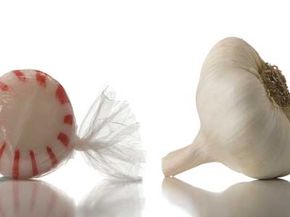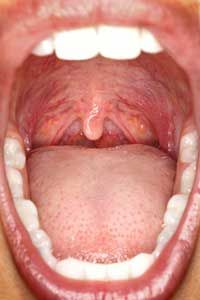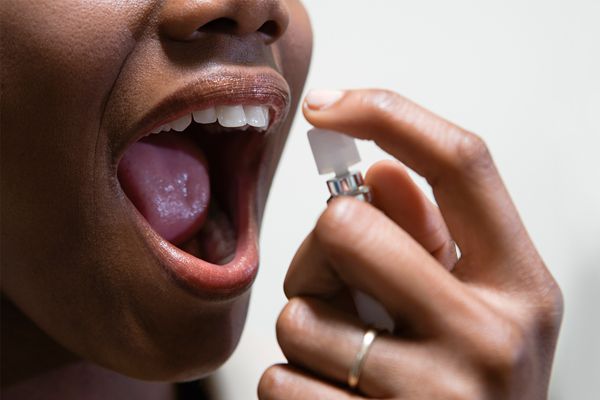What's more uncomfortable than having a conversation with a close talker? Having a conversation with a close talker who's sorely in need of a breath mint. Granted, bad breath happens to good people. You go out for pasta primavera and inadvertently eat the equivalent of an entire clove of garlic. Or perhaps you decide to satisfy a hankering for a cheese steak sandwich with onions. Even if you immediately brush your teeth and gargle with mouthwash, the offending odors from your meal can linger on the breath like an annoying song stuck in your head. No matter what methods you try, sometimes you can't shake that stink.
When we think of bad breath, we often relate it to garlic and onions. These prime culinary culprits can certainly produce transient, or temporary, bad breath once they get inside our bodies because of their chemical make-up. Garlic, for instance, contains the sulfuric compound allicin that gives the plant its pungent punch [source: Herbert]. That, in turn, can translate to wince-inducing breath.
Advertisement
Chronic cases of beastly breath, called halitosis, are harder to tackle than simply choosing less flavorful menu items. Halitosis affects an estimated one in four adults, not to mention the scores of us with healthy mouths who go the extra mile to ensure that our exhales don't offend [source: Haraszthy et al]. Then there are those who experience the fear of bad breath -- halitophobia -- so intensely that their dentists may refer them to psychologists.
As a result, the oral hygiene industry is booming. Grocery store and pharmacy shelves are packed with a vast array of products to slay those oral odors, including gums, sprays, toothpastes and more. Analysts estimate that by 2010, related sales in the United States will hit nearly $5 billion [source: Alexander]. And Americans aren't the only ones fretting over noxious breath. Other cultures have their own ways of freshening up, such as chewing on cloves in Iraq, cinnamon in Brazil and guava peels in Singapore [source: Fisher].
But what's going on inside of our mouths that triggers halitosis? Open up, say "ahhh" and let's sniff out the source of those smells.
Advertisement



